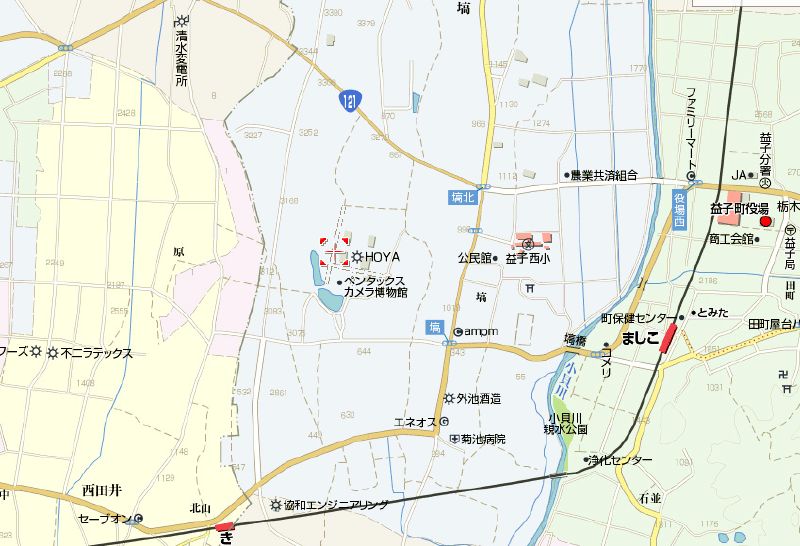Nestled in the hills outside of Mashiko (about three hours out of Tokyo), is the Pentax Camera Museum. It is part of a much larger factory & research establishment...
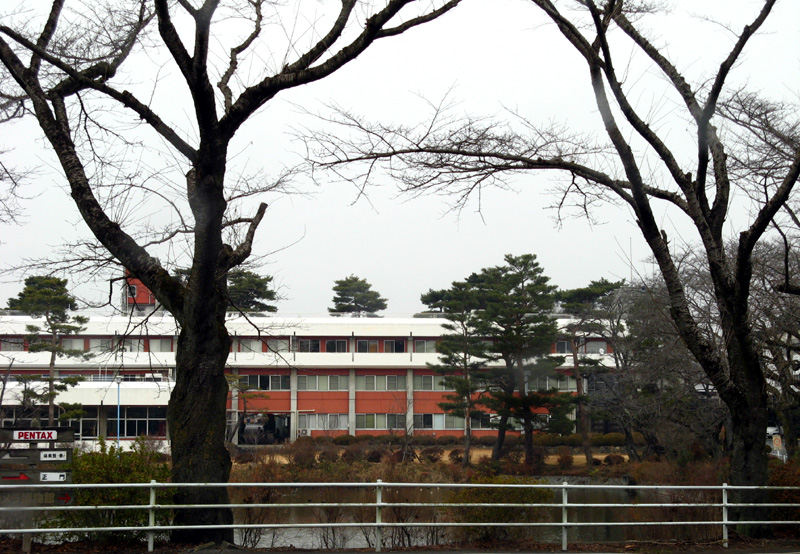
The employees have a few boats to chase ducks on the lake in front of main building, and after a cursory talk with the guard we were given open access to wandering around the back lots looking for the third floor museum.

If not for the first gen Pious sitting in the car park, it was like walking back into 1975, when the KX-series was released. The buildings date from about this time, and are kept pristine and in their original configuration, including multi-colored vinyl awnings that looked like they came from left over Expo '70 stock.
The museum displays over 1000 cameras, from their held examples of about 5000 types. Displayed clockwise around one large room, the differing levels of cabinet used for folders, SLRs, TLRs, RFs,
etc, allows you to follow the development (and demise) of particular models - of which they have many.

Daguerreotype cameras, with original Daguerreotypes, colloidal process, magic lanterns, all start to fade into Kodak boxes, the 1925 Leica A, 1929 Rolleiflex, 1933 Exacta SLR, 'Blad 100, 1952 Pentax SLR, Nikon F, Yashica TLRs. Minox spy cameras, stereo cameras & displays, the first Polaroids. A separate section for the Pentax line allows you to see all the Pentax stuff in one lump. Digital included.
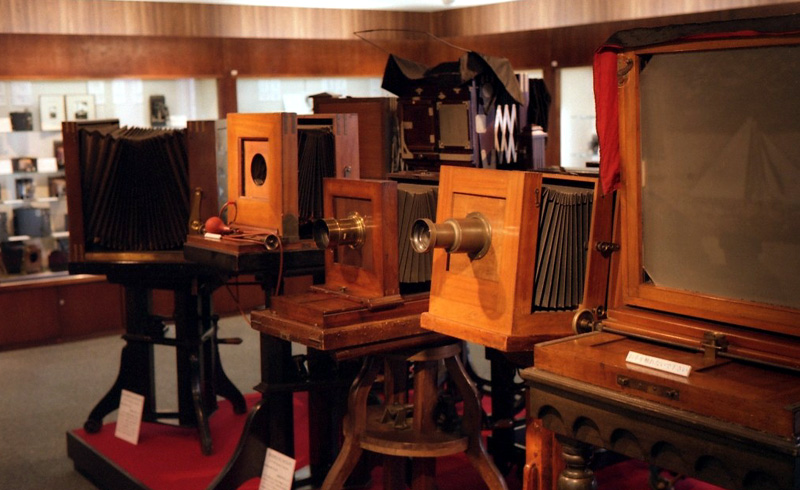
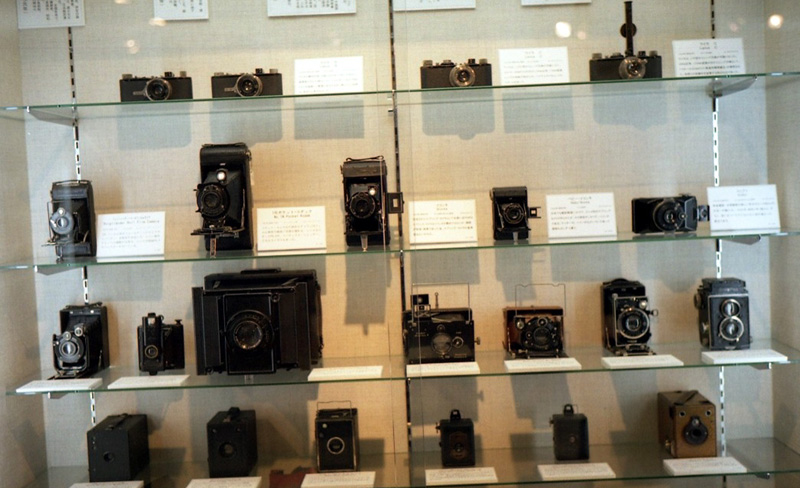
One cabinet row charts TLRs, and about halfway along they display a Fujicaflex Automat from 1954. Possibly the coolest looking TLR ever made, getting a Loewy industrial design look. Next to it my first TLR the Ricohflex VII.
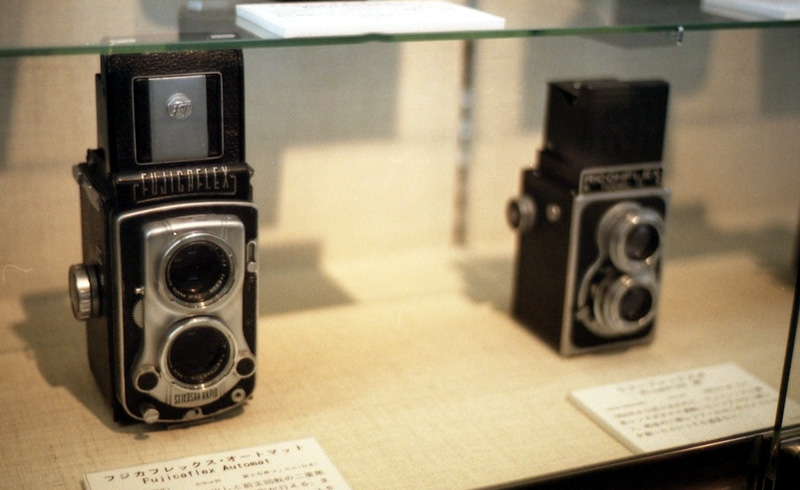
Down the row of SLRs was a Fujita 66, something I imagine Sean would enjoy.

As well as the camera, they also have a section on meters, accessories and films.

A Pentax 67 waterproof case made from cast aluminum took the prize for most massive device I've seen in a long time.

The collection was established in the late 1960s, and Pentax moved the museum from Tokyo to Mashiko about ten years ago according to the curator. My photographic experience now includes the proofreading of their new English brochure as the curator took advantage of my vast language skills while we were there, so if you make the journey you can tell them you know who did that... Entrance is free, and it is open 09:00 to 17:00 most weekdays. Well worth the trip. Skj.
